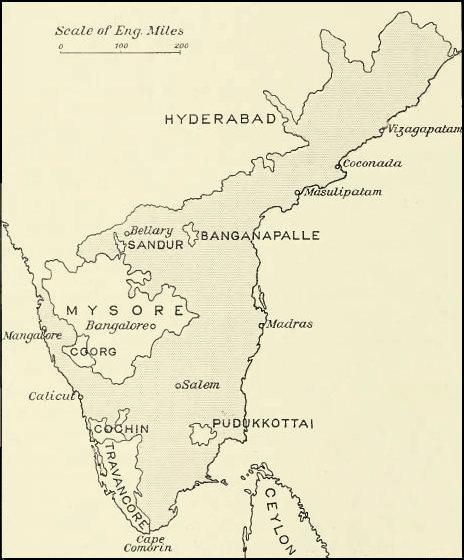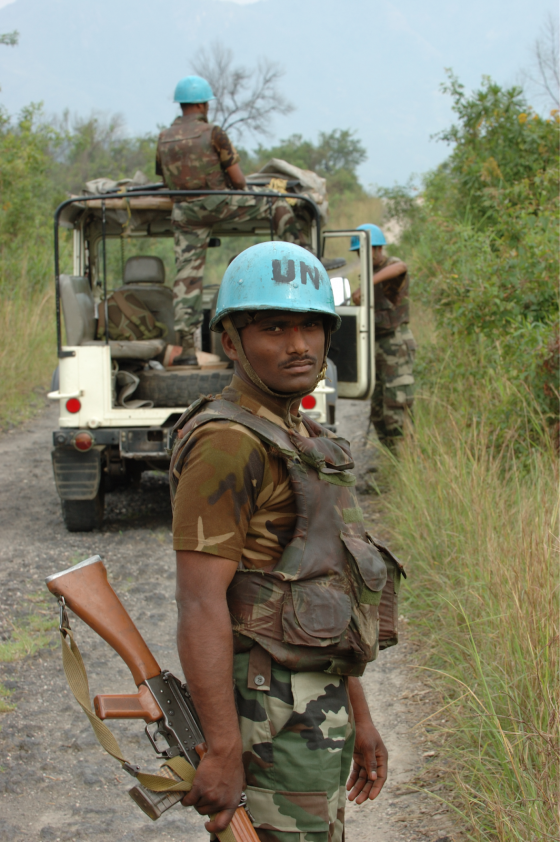Back in the 1970s, Chennai was called Madras. And in the Hindi-belt, everyone from southern India was classified as Madrassi. Never mind what the ‘Madrassis’ spoke at home – Malayalam, Kannada, Coorgi, Tulu, Telugu or even Badaga; most North Indians (including the educated ones) believed that anyone from ‘down-below’ spoke an exotic language called ‘Madrasi’ (that is Madrassi with one ‘s’ removed)! It did not matter where they actually came from: Kanyakumari, Kakinada or Kozhikode. Bollywood took the stereotype to a whole new level and the idea of a Madrassi was here to stay.
But there is a history behind this fallacy, and the British were to blame.

The British ruled over large parts of India. In 1639, they established their very first colony at Madras (present day Chennai). This colony grew quickly, first covering all of Tamilnadu, then major portions Karnataka and Kerala, Andhra and even the southern edge of Odisha. So, what was this huge region called? The British simply called all of it Madras*. There was a Madras city, and all around it for miles and miles was the Madras Presidency. Simple, no more jaw-crunching Indian names! And all inhabitants of this vast peninsular region were technically ‘Madrassi’.

Madras City was the nerve centre of Madras Presidency, so people of every southern region flocked here for education, business and profession. These people were “Madrassi” by adoption and many even learnt the language of Madras City – Tamil. Then the Madrassis (natives and immigrants into Chennai) started moving to the North and started occupying key posts in government and business. They were collectively categorised as ‘Madrassis’ wherever they went. Many of independent India’s first leaders – Governor-general Rajaji, a Tamilian, Field Marshal Cariappa, a Coorgi, Railway Minister John Mathai, a Malayali, Vice President Dr. Radhakrishnan, a Telugu, were ‘Madrassis’ who did not know that they spoke ‘Madrasi’!

There is another angle too. Quite early in the colonial era, the British raised a fine army to protect their empire. Naturally, their first regiment was the Madras Regiment. This elite regiment not only had Tamils, but also other neighbouring ethnic groups like Nairs of Kerala, and Coorgis of Karnataka. But all soldiers of the regiment were called Madrassis. The logic was simple: a soldier of the Punjab Regiment was a Punjabi, so a soldier of the Madras Regiment must be a Madrassi! The official war cry of the regiment was (and continues to be) “Veera Madrassi, adi, kollu”: Oh, brave Madrassi, strike and kill! Wherever they fought, from Kochi to Kilimanjaro, they became famous as Madrassis. The Madrassi image got reinforced!


When the British left, independent India reorganized itself into states based on linguistic patterns. Madras Presidency was regrouped as Tamil Nadu, Kerala, Karnataka, Andhra and Odisha. But the Madrassi nomenclature persists, and such references continue to crop up every now and then, even though it is now widely considered as an offensive stereotype.
*Post Script: This does bring up the question: Why was Madras called Madras? Theories abound, and Madras historian, the late S. Muthiah has chronicled them all. There was a local chieftain named Madarasan after whom it was named; or perhaps the Portuguese church of Mary, mother of God – Madre de Dios, gave Madras its name; the leading Portuguese family in colonial times was the Madeiros, and their city was Madras; or perhaps the name came from a Madarsa (Islamic school) that existed in the city. There is no compelling evidence for any single theory and so, the Madras mystique endures.
Did you like this story? You may like these posts too…
Chennai Genesis: Before Madras became Chennai in 1996, Madrasapattinam had to become Madras. How did this historic city begin?
The Real Emden: The story of a German ship that attacked Madras and made its way into colloquial Tamil – ‘Emden’
A European duel in South India: In 1740, the king of the Austrian Empire died and war broke out in Europe. The result – bitter fighting in the far-flung colonies of European powers, including Madras or present day Chennai.
The LIC story: At 54 metres, it was the tallest building in Independent India in 1959. This is the story of the iconic LIC building in Chennai.
Archives
- January 2022
- December 2021
- November 2021
- August 2021
- March 2021
- February 2021
- January 2021
- December 2020
- November 2020
- October 2020
- September 2020
- August 2020
- April 2020
- March 2020
- February 2020
- January 2020
- November 2019
- October 2019
- September 2019
- August 2019
- July 2019
- June 2019
- August 2017
- February 2017
- January 2017
- October 2013
Featured Posts
- Tales that pots tell: Keeladi excavations AUGUST 18, 2021
- The Last Grand Nawab: Wallajah FEBRUARY 10, 2021
- How Tej Singh became Raja Desingu of Gingee FEBRUARY 5, 2021
- How Shahjahan seized the Mughal throne JANUARY 28, 2021
- Alai Darwaza – Qutub Minar Complex, Delhi NOVEMBER 21, 2020
- Marking History through British buildings NOVEMBER 17, 2020
- The last great queen of Travancore NOVEMBER 7, 2020
- Brahmi and the evolution of scripts OCTOBER 15, 2020
- The Cambodian King of Kanchipuram OCTOBER 14, 2020
- James Prinsep – the man who read the writing on the wall OCTOBER 10, 2020
- Mariamman – the Village Goddess who travelled SEPTEMBER 30, 2020
- Misnamed Monuments of Mamallapuram SEPTEMBER 28, 2020








